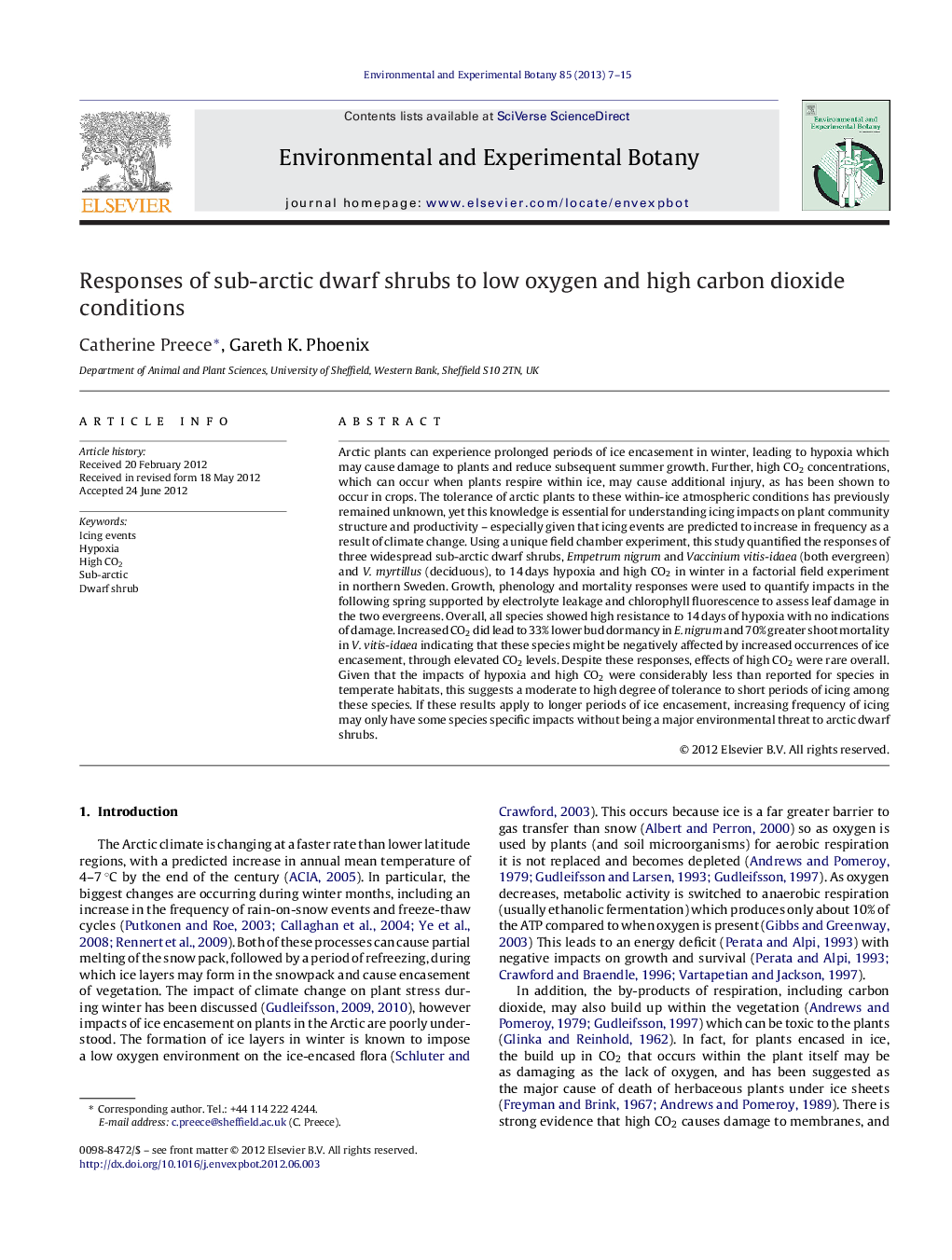| کد مقاله | کد نشریه | سال انتشار | مقاله انگلیسی | نسخه تمام متن |
|---|---|---|---|---|
| 4554624 | 1628092 | 2013 | 9 صفحه PDF | دانلود رایگان |

Arctic plants can experience prolonged periods of ice encasement in winter, leading to hypoxia which may cause damage to plants and reduce subsequent summer growth. Further, high CO2 concentrations, which can occur when plants respire within ice, may cause additional injury, as has been shown to occur in crops. The tolerance of arctic plants to these within-ice atmospheric conditions has previously remained unknown, yet this knowledge is essential for understanding icing impacts on plant community structure and productivity – especially given that icing events are predicted to increase in frequency as a result of climate change. Using a unique field chamber experiment, this study quantified the responses of three widespread sub-arctic dwarf shrubs, Empetrum nigrum and Vaccinium vitis-idaea (both evergreen) and V. myrtillus (deciduous), to 14 days hypoxia and high CO2 in winter in a factorial field experiment in northern Sweden. Growth, phenology and mortality responses were used to quantify impacts in the following spring supported by electrolyte leakage and chlorophyll fluorescence to assess leaf damage in the two evergreens. Overall, all species showed high resistance to 14 days of hypoxia with no indications of damage. Increased CO2 did lead to 33% lower bud dormancy in E. nigrum and 70% greater shoot mortality in V. vitis-idaea indicating that these species might be negatively affected by increased occurrences of ice encasement, through elevated CO2 levels. Despite these responses, effects of high CO2 were rare overall. Given that the impacts of hypoxia and high CO2 were considerably less than reported for species in temperate habitats, this suggests a moderate to high degree of tolerance to short periods of icing among these species. If these results apply to longer periods of ice encasement, increasing frequency of icing may only have some species specific impacts without being a major environmental threat to arctic dwarf shrubs.
► Three dominant sub-arctic dwarf shrub species demonstrated high hypoxia tolerance.
► High CO2 caused 33% lower bud dormancy in Empetrum nigrum.
► We found 70% greater shoot mortality in Vaccinium vitis-idaea following high CO2.
► Overall these species demonstrated moderate to high tolerance to the conditions.
► Short-term hypoxia due to icing may not be a major threat to arctic vegetation.
Journal: Environmental and Experimental Botany - Volume 85, January 2013, Pages 7–15